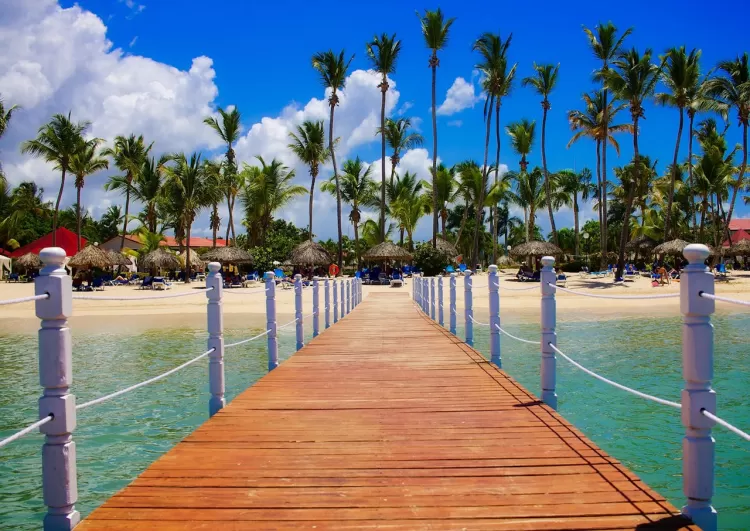Opinion: India In 2024: The Great Balancing

Join our WhatsApp Community to receive travel deals, free stays, and special offers!
- Join Now -
Join our WhatsApp Community to receive travel deals, free stays, and special offers!
- Join Now -

As the year concluded, Prime Minister Narendra Modi signed it off with a historic visit to Kuwait, the first visit by an Indian Prime Minister to the country in 43 years. He was awarded 'The Order of Mubarak Al Kabeer' by the Amir of Kuwait, Sheikh Meshal Al-Ahmad Al-Jaber Al Sabah, which he accepted on behalf of 1.4 billion Indians. The two nations elevated their ties to a ‘strategic partnership' with a focus on diverse areas including politics, trade, investments, energy, defense, security, health, education technology, cultural, and people-to-people ties. This visit further reinforced India's substantive outreach to the Middle East where the Modi government has been to fundamentally reconfigure both India's presence and engagements. At a time when the Middle East is riven with various fault lines and sits on the precipice of a region-wide war, New Delhi's ability to maintain close ties with all the key stakeholders – the Gulf Arab states, Israel and Iran – speaks volumes about India's diplomatic success.
This year also saw India and China finally managing to get out of the logjam ushered in by the 2020 Galwan crisis and China's aggression. It has been a significant diplomatic victory for New Delhi to get Beijing to acknowledge that it was because of Chinese actions that the relationship got derailed. Since 2020, India's position has been clear and categorical, that unless the status quo ante is restored along the LAC, there is no likelihood of the bilateral ties going back to normal. Where the Indian military continued to hold the line along the border, Indian diplomacy continued to stick to the nation's red lines, which ultimately led China to reorient its posture.
In October, China and India reached an agreement on patrolling a stretch of their long-disputed shared border. The deal brought an end, for the time being, to a four-year standoff in the high mountains of the Himalayas that had severely strained ties between the two countries. It also allowed Indian Prime Minister Narendra Modi and Chinese President Xi Jinping to meet in Russia and hold talks for the first time in five years. In 2020, a bloody confrontation in the Galwan Valley left dozens of soldiers dead and led to the suspension of diplomatic ties to bilateral relations between the two Asian giants entering into a state of deep freeze. The Indian public fumed at the Chinese aggression, and Modi's government cancelled direct flights between the countries and banned the social media app TikTok, among other measures meant to punish China. There is now a possibility of a reset and a return to normal ties.
But China and India have no desirable “normal” status quo to return to. Challenges abound in the bilateral relationship, and China's ambitions continue to circumscribe India's ability to act at the regional and global levels. Many flash points remain along the border and could be reactivated at any time by Xi's aggressive regime. Although Modi has tried harder than his predecessors to hold a strong line against Chinese expansionism, India's economy remains hugely dependent on China. Even as India's exports to China have dropped somewhat in the last five years, its imports from China have ballooned. It is this challenge of dependence on the Chinese economy that India will have to manage effectively if it wants the present trend in ties to continue.
The two powers that are going to play a pivotal role in helping India manage China are the US and Russia. India has been effective in cultivating partnerships with both even as they don't see eye to eye with each other, especially since the Russian invasion of Ukraine. This year saw India-US ties continuing to maintain an upward trajectory despite differences over developments in India's neighbourhood and allegations of Indian security agents being involved in an attempted assassination plot against a Sikh separatist leader. With the election of Donald Trump to the White House, it is expected that convergence of mutual interests will continue to drive the trajectory of ties.
With Russia, the relationship has been galvanised with Modi making Moscow his first port of call after his third consecutive win in the parliamentary elections. And India's posture of maintaining equidistance between Russia and Ukraine and calling for political negotiations has paid dividends as the West and Russia get ready to conclude the active phase of the war under a Trump Administration that is not keen at all on prolonging the war. If Trump manages to end the Ukraine war and by doing so manages to drive a wedge between China and Russia, New Delhi will face a much more favourable external environment.
It is in the neighbourhood that India got perhaps its biggest shock of the year when Sheikh Hasina had to leave Bangladesh in August after weeks of student-led protests that were met with violence. It was indeed expected that after Hasina, there would be turbulence in Delhi-Dhaka ties given the partnership that India had crafted with Hasina. The anti-India rhetoric emanating from key stakeholders in the interim administration has vitiated the atmosphere for productive governmental engagement even as incidents of violence against Hindus as well as attacks on temples in the last few months have jeopardised the strong societal connect between the two nations. India's task is cut out as it seeks to preserve its ties with its close ally in South Asia. If India-Bangladesh ties saw instability, then India's ties with other regional players like the Maldives and Sri Lanka stabilised.
This year, India's global profile grew as New Delhi sought to amplify both its own voice as well as the voice of the Global South in the international order. For most nations, India today is an important partner to be courted and for India, the world is truly becoming its oyster. New Delhi will have to continue to work on enhancing its global profile at a time when there are enormous opportunities to be tapped into.
(Harsh V Pant is Vice President for Studies at Observer Research Foundation, New Delhi.)
Disclaimer: These are the personal opinions of the author
What's Your Reaction?
 Like
0
Like
0
 Dislike
0
Dislike
0
 Love
0
Love
0
 Funny
0
Funny
0
 Angry
0
Angry
0
 Sad
0
Sad
0
 Wow
0
Wow
0



















































